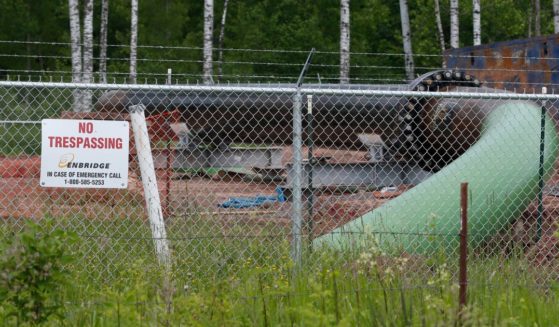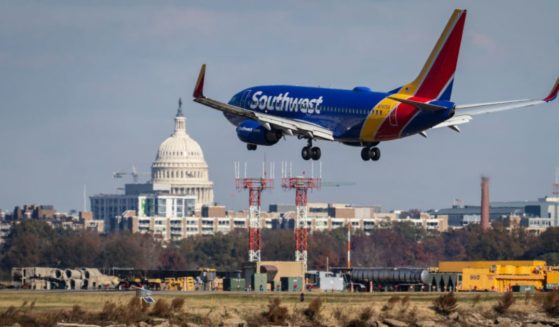Alberta Clipper To Drop Snow In Chicago, Detroit Ahead Of Next Arctic Blast

AccuWeather meteorologists on Wednesday were tracking a brewing storm that is forecast to deliver a swath of accumulating snow from the northern Rockies to portions of the northern and central Plains and Great Lakes this weekend.
The fresh snowfall will occur ahead of a new intrusion of Arctic air that was building over northern Canada and is poised to move southward into part of the United States in the storm’s wake.
Road crews and property owners in the north-central U.S. will want to expedite clean-up operations from the snow that fell during a midweek storm ahead of the impending storm system.
“There have not been many Alberta clipper-type storms so far this winter,” AccuWeather Lead Long-Range Meteorologist Paul Pastelok said. “So, people may not be used to the fast-hitting nature of the storm and its snow.”
Most storms that have brought snow have taken a slower southwest-to-northeast path from the southern Plains to the Great Lakes region. Instead, this storm will do what the name implies — drop quickly southeastward from British Columbia and Alberta, Canada, and turn eastward and race across the central U.S.
“Forecast data suggest the snowfall will occur in a fairly narrow band across the Plains and Midwest this weekend,” Pastelok said. Forecasters noted that the ultimate track of the storm could still shift a bit prior to its eventual path across the northern U.S.

Road conditions are likely to deteriorate quickly from west to east along portions of interstates 80 and 90 starting late this week and continuing into this weekend. Airline passengers should anticipate delays and possible flight cancelations into and out of the major hubs of Chicago and Detroit on Saturday.
Several inches of snow is likely to fall beginning on Friday in portions of western and central Montana and in much of Wyoming. From there, snow will push eastward across northern and central Nebraska and southern South Dakota on Friday night, AccuWeather meteorologists say.
Portions of Iowa, northern Illinois and perhaps southern Wisconsin will likely be the next to receive accumulating snow on Saturday. From Saturday night to early Sunday, the snow will extend into portions of southern Michigan and perhaps northern Indiana.
At this time, the cities of Des Moines, Iowa, Chicago and Detroit lie within the anticipated path of accumulating snow. Travel conditions can deteriorate quickly as the storm moves swiftly along to the east, forecasters say.
Both Chicago and Detroit were running well behind the average pace for their seasonal snowfall totals as of Jan. 24. Chicago typically receives about 18 inches of snow by the last week of January, while Detroit averages about 22 inches. Prior to the arrival of Wednesday’s storm, Chicago had recorded a mere 6.2 inches and just 11.1 inches had fallen in Detroit this season. On the other hand, Des Moines was close to its average of 18 inches with a seasonal total of 16.7 inches as of Tuesday.

The clipper system is not expected to move into northeastern cities such as New York City or Boston. Instead, meteorologists expect the storm to track toward the northeast and produce a stripe of snow along the U.S. and Canada border, near the St. Lawrence Valley, later this weekend.

“Temperature departures over the fresh snow cover in Iowa, Nebraska, southern Minnesota and southern Wisconsin can reach 25-30 degrees Fahrenheit below normal for a couple of days from later this weekend to early next week,” Patelok said. The average high temperatures for this zone range from the mid-20s to near 32 F. As a result of this Arctic blast, high temperatures could settle in the single digits and even near zero for a time in this part of the country.
In portions of Montana, the Dakotas, Wyoming and northern Minnesota, one or more days with highs below zero are likely late this weekend to early next week. During the Christmastime outbreak, temperatures were approximately 10-20 degrees lower.

The upcoming wave of Arctic air won’t be as expansive as the one that unfolded in December. However, many areas of the Great Lakes and Ohio Valley could experience a few days with highs in the 20s next week.
The cold air won’t be able to be pulled farther to the east and south until another storm arrives.
A storm next week could put down a swath of snow and ice from portions of central Texas to the Ohio Valley, Appalachians and portions of the Interstate 95 corridor in the mid-Atlantic as the colder air creeps in.
Produced in association with AccuWeather.
The Western Journal has not reviewed this story prior to publication. Therefore, it may not meet our normal editorial standards. It is provided to our readers as a service from The Western Journal.
Truth and Accuracy
We are committed to truth and accuracy in all of our journalism. Read our editorial standards.












